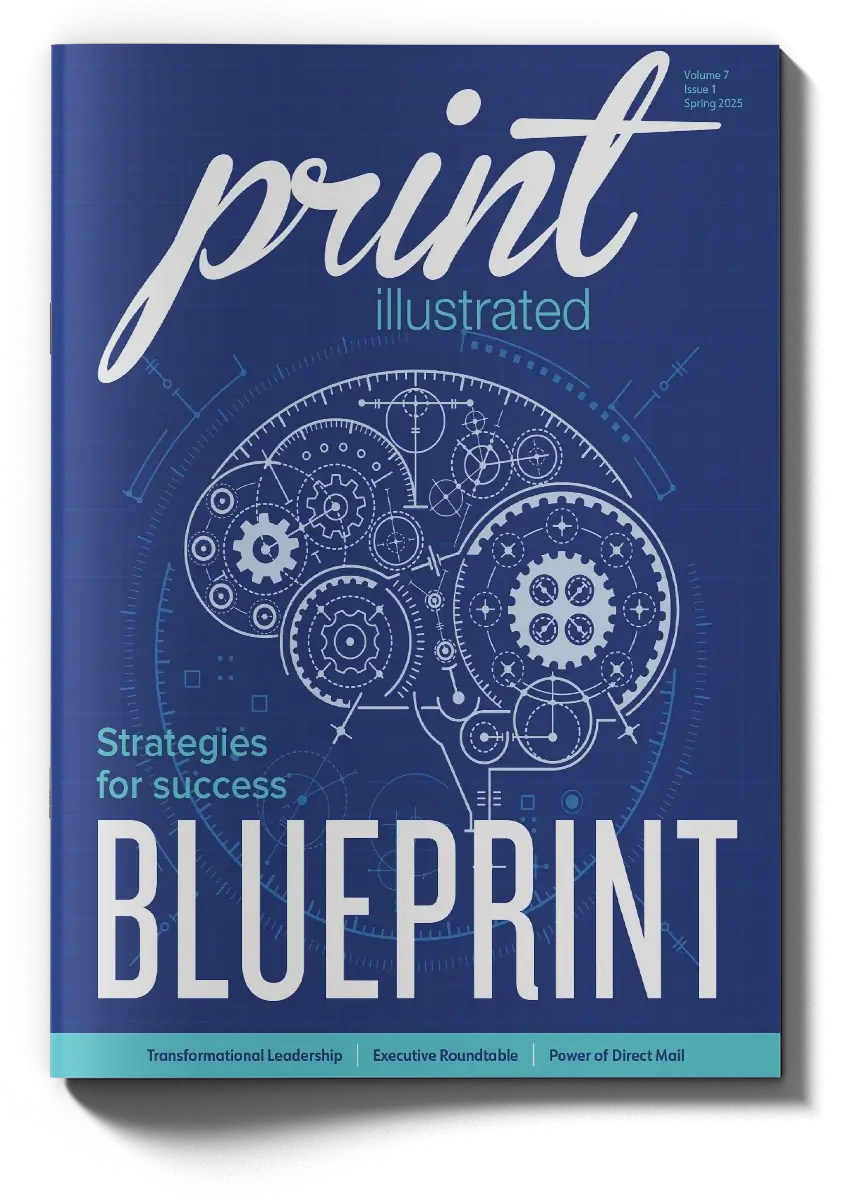In a 1967 essay, Barrington College President Charles Hummel coined the phrase the “tyranny of the urgent.” The term refers to one or more situations where there is a regular tension between things that are urgent and those that are important. Too often, Hummel surmised, the urgent wins. Hummel cautioned that for leaders to lead, they must be intentional about assessing importance over urgency.
Andy Markl doesn’t believe the print industry is there yet. In a time when print executives are trying to navigate everything from cutting edge technological advancements to evolving customer expectations in areas like sustainability and social responsibility, he says priorities too often can be misaligned. Markl, VP of The Color Spot (TCS), believes that because today’s print leaders operate in an industry that is reactionary, they sometimes miss the mark on strategies that build sustainability.
“Our industry depends on equipment capabilities and workflows that are fragile,” says Markl, who also is a board member with the Printing Industry of the Carolinas (PICA). “We have a value stream for materials and products that is very much just in time. There is so much time spent fearing technology and worrying if someone is going to do the job cheaper that too many never find a way on a random Tuesday at 10 a.m. to find time to put a little work on the business versus in the business.”
“As the industry evolves to become more productive, innovative and streamlined, leaders must strike a delicate balance in adopting new technology.”
– Randy Sparrow, VP of Sales, Salt Lake Mailing & Printing
Ask Markl to define that most fundamental aspect of transformational leadership and he says it is recruiting the next generation of workers and building your succession plan. “I get a lot of calls from people asking me for help when things go wrong. When someone wants to retire, a partner leaves. I don’t think it’s anybody’s fault. You can’t be held accountable for something you were never told or never shown. There are too many owners out there aging without clear exit strategies or apprentices. We lack an infrastructure for leadership transition—and we were all apprentices once.”
For Markl, any talk of transformational leadership starts there—by finding the industry’s next slate of leaders. As part of his work with PICA, Markl is founder of the Emerging Leaders group, which is geared toward professionals aged 35 and younger. The program, which provides a platform for personal and professional growth, engages students and young professionals through collaborative opportunities, education and mentorship programs.
Markl says the vision for PICA’s program focuses on development, value creation and networking, while empowering and advocating for the next generation to create value for themselves, their companies and the industry at large. “My organization has tentacles all the way back to eighth grade. I have been in this industry since I was 14, so I know the path forward. The goal should be to work yourself out of the process and enable your staff to meet with clients. Encourage and show them how to make their own decisions. Give them the autonomy to lead.”
Markl says that every leader of a print company should be asked to name three people within their organization who can carry the business forward. “Who are those emerging leaders? There is no time to tread water with these conversations. There are fertile soils out there to be tapped. Places like Clemson University, which has one of the best graphics programs in the country. The process of leadership needs to be developed and cultivated locally. It is easy to do.”
Bridging the gaps
One of the most critical leadership strategies Randy Sparrow uses is one that fosters collaboration between seasoned tradespeople and younger, free-thinking professionals entering the workforce. Bridging this gap enables Salt Lake Mailing & Printing to leverage deep industry expertise while embracing fresh perspectives that drive innovation.
“Encouraging this synergy requires creative leadership—leaders who inspire cross-generational collaboration and adaptability across all facets of the organization,” says Sparrow, VP of Sales at the Salt Lake City printer. “Building a strong team culture means striking a balance between innovation and tradition, seamlessly integrating new technologies and methodologies while preserving the core strengths that have long defined our industry. When organizations successfully blend experience with innovation, they cultivate a resilient, forward-thinking workforce that not only adapts to change but thrives in an evolving landscape.”
Sparrow believes this type of innovative thinking is critical in today’s ever-evolving landscape, one that is continually paced by emerging innovations. “Print leaders must actively drive innovation by encouraging every division to embrace new methodologies and integrate digital equipment into daily operations. Digital technology not only keeps companies aligned with evolving printing trends but also enhances production speed and efficiency. Fostering a mindset of continuous improvement—where employees rethink workflows and challenge traditional processes—creates an environment of growth and adaptation.”
“Who are those emerging leaders? There are fertile soils out there to be tapped… The process of leadership needs to be developed and cultivated locally. It is easy to do.”
– Andy Markl, VP, The Color Spot (TCS)
The approach not only cultivates emerging leaders, but also helps break down resistance to change. While every new process comes with challenges, the ability to accept, learn from and swiftly adapt to setbacks is what keeps organizations competitive in a market ripe with change. One of the biggest hurdles is managing the high cost of modernization—not just in terms of equipment, but also in potential shifts within the customer base.
“As the industry evolves to become more productive, innovative and streamlined, leaders must strike a delicate balance in adopting new technology,” Sparrow says. “Investing too aggressively in a single year can create financial strain, especially during economic downturns, while delaying upgrades for too long can leave a company struggling to keep up with industry standards. Finding the right pace of transformation is critical to long-term success.”
One of the most important adjustments today’s leaders can make is to recognize when they have reached a crossroads—whether it’s due to technology shifts or evolving customer needs. Sparrow says having open, honest conversations with your customers about these changes fosters transparency and trust. “Ultimately, all products and processes evolve, and businesses must adapt accordingly. Successfully managing industry transformation requires balancing innovation with financial prudence, while simultaneously guiding the company toward growing markets and strategically adjusting to the decline of legacy products.”
As the print industry continues to evolve, transformational leaders are proving that adaptability, vision, and innovation are the keys to long-term success. By embracing change, investing in new technologies and fostering a culture of continuous learning, they are shaping the future of print. The path forward is clear—those who lead with purpose and agility will leave a lasting impact.

